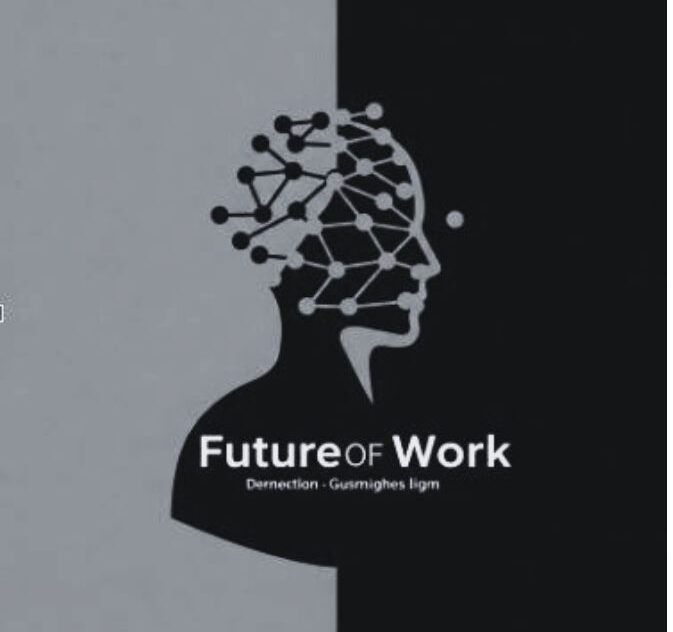Bridging the Gap Between Business Leaders and Middle-Skills Workers
In the grand arc of history, technological revolutions have rarely arrived as sudden earthquakes, reshaping the landscape in an instant. Instead, they build like slow-moving tides. Today, we stand at the edge of such a tide, an era where automation, digitization, and shifting workforce expectations are redefining what it means to work.
But according to the Future Positive Report, there’s a disconnect at the heart of this transformation: Business leaders recognize the forces reshaping the future of work, yet they struggle to prioritize or fully understand them. Meanwhile, middle-skills workers—those who don’t have a four-year degree but fill essential roles across industries—are not only aware of these shifts but are surprisingly optimistic and eager to prepare. The question is: Why aren’t companies keeping pace with their workers’ willingness to change? And what might they be missing by not engaging them as partners in this new era?
The Uncertainty Paradox
If you ask executives about the future of work, many would paint a picture of uncertainty. The Future Positive Report reveals that business leaders acknowledge a wide range of transformative forces, from the increasing demand for new skills to the rise of digital freelancing. Yet their inability to distinguish which forces will be most urgent has created a paradox: They express confidence in their organizations’ preparedness—79% to 90% believe they are ready for all 17 forces of change—despite a lack of clarity on which forces are most critical.
This blanket confidence seems almost like whistling in the dark. The top-ranked concern for the next five years—employees’ expectations for work-life balance—was cited by 46% of business leaders, yet technological disruptions, such as automation replacing jobs, ranked lower in priority. In a world where artificial intelligence is advancing at breakneck speed, should companies really be prioritizing flexible work schedules over the existential question of what work itself will look like?
Workers Are Willing, But Companies Are Hesitant
Middle-skills workers, meanwhile, are acutely aware of the shifting sands beneath their feet. Across 11 countries, the majority not only recognized the forces reshaping their industries but also saw them as opportunities rather than threats. More than half of workers viewed 11 out of 15 major trends—such as the need for reskilling or the shift toward a digital economy—as beneficial to their future.
More importantly, they see preparing for these changes as their responsibility. Three out of four workers worldwide believe they need to take action, and two out of three are confident in their ability to do so. Strikingly, workers were more than twice as likely to believe that preparing for the future was their responsibility (46%) rather than that of their employer (19%) or government (20%).
Yet despite this readiness, companies often perceive their workforce as resistant to change. Nearly a quarter of business leaders cited employee fear of significant change as a reason for delaying preparations. But what if the hesitation isn’t coming from workers at all? What if, instead, it’s the organizations that are unwilling—or unprepared—to act?
Barriers to Adaptation
Workers may be eager to upskill, but they don’t have unlimited resources. Financial constraints, lack of time, and uncertainty about which skills to pursue remain major hurdles. In Brazil, for instance, the financial burden of retraining was cited as the most significant barrier. Companies that fail to recognize these constraints risk leaving their workforce stranded—fully aware of the changes coming but unable to act.
At the same time, many businesses aren’t doing enough to assess and close their own skills gaps. Some organizations don’t even have a clear picture of their employees’ existing skills, let alone a strategy for helping them develop new ones. In contrast, innovative companies like Catalyte have embraced AI-driven talent assessment to identify and train individuals based on cognitive ability rather than traditional academic credentials. Such approaches could be the key to bridging the gap between corporate strategy and workforce reality.
The Missed Opportunity
There is a fundamental irony in how many companies are approaching the future of work. The Future Positive Report suggests that while businesses see workforce-related challenges as a pressing issue, they continue to treat workers as passive subjects in this transformation rather than active participants. Companies prioritize finding new talent for evolving jobs (44%) over investing in reskilling existing employees. They express concern about worker expectations for work-life balance but overlook the deeper issue—helping workers stay relevant in an economy that is rapidly evolving.
Ignoring the optimism and potential of middle-skills workers is a strategic misstep. These employees represent an untapped resource—a workforce that is both willing and aware, yet often left unsupported. Companies that fail to invest in reskilling and adaptation risk falling behind, not because the workforce is resistant to change, but because businesses themselves are failing to lead.
The Path Forward
The solution isn’t just to acknowledge change—it’s to actively prepare for it. The Future Positive Report outlines a roadmap for businesses to take meaningful action:
- Make the future of work a leadership priority. Many executives see this as an issue for CEOs and top leadership, yet few act on it with urgency. The companies that thrive will be those that integrate workforce transformation into their core strategy.
- Develop a culture of foresight. Some organizations, like Steelcase, have established dedicated teams to monitor workplace trends, ensuring they are not caught off guard by disruptive shifts.
- Invest in closing the skills gap. Rather than searching externally for new talent, companies can harness AI-driven hiring models to identify hidden potential within their own workforce.
- Partner with employees, not just train them. The shift in work isn’t just about acquiring new skills—it’s about building trust. Workers need to see that change can benefit them, not just the bottom line. Transparency, support, and collaboration will be essential.
If history has taught us anything, it’s that revolutions—whether industrial, digital, or now, AI-driven—are not won by those who hesitate. The companies that will shape the next era of work will not be the ones waiting for certainty. They will be the ones that recognize the power of their workforce, embrace change as a shared challenge, and act decisively.
Key Findings for Consideration
- 79% to 90% of business leaders believe their organizations are well-prepared for all 17 forces of change—despite lacking clarity on which forces are most critical.
- Only 12 percentage points separate the most and least cited significant forces, showing little prioritization among business leaders.
- 46% of business leaders rank work-life balance expectations as a top concern, while automation and AI rank lower in priority.
- More than 50% of workers view 11 out of 15 forces of change as positive for their future.
- 3 out of 4 workers globally recognize the need to prepare for the future of work.
- Workers are more than twice as likely (46%) to see preparing for the future as their own responsibility, compared to employers (19%) or governments (20%).
- 50% of companies cite other strategic priorities as the main reason for not preparing for workforce changes.
- 34% of business leaders say they lack visibility on future trends.
- Workers face major barriers to training, including financial constraints, lack of time, and uncertainty about which skills to pursue.
The future of work isn’t something to prepare for later. It’s already here. The real question is: Will companies rise to meet it?






